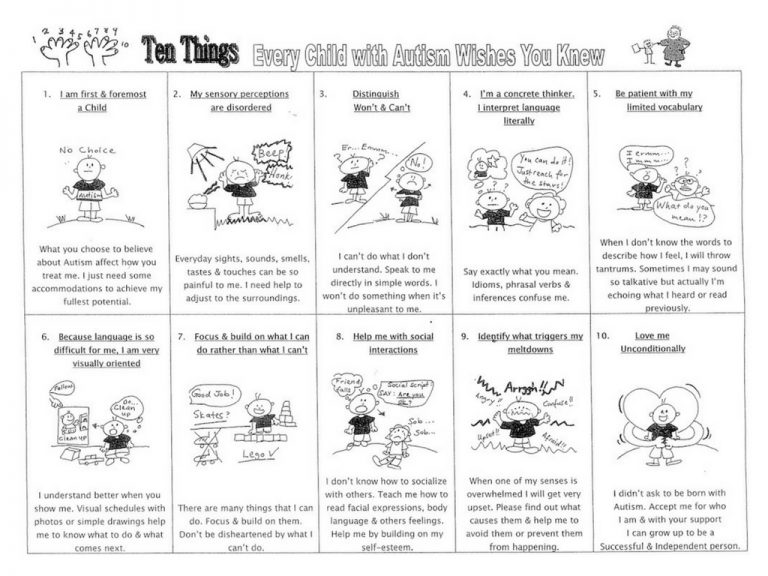SingaporeMotherhood | Parenting
May 2018
How to Respond to a Child who has Autism

A survey of early intervention professionals last month revealed that only 11 per cent think that Singapore is an inclusive society (source). I agree. My son has autism. When I saw the video (earlier this year) of a father kicking and pushing a boy who has autism, I felt indignant. Why would he do that to a harmless child? The father was criticised for being a big bully. However, upon reflection, I realise it is easy to simply judge the father. What if we were in his shoes? Chances are, we’d react before thinking. So I tried to look at the situation with neutral eyes. I know it’s difficult, but bear with me.
Firstly, I noticed that the father has two kids who are younger than the boy. I’m giving him the benefit of the doubt here, but he may not have known how to deal with an older child who is more active and playful than his children.
So when the boy with autism seemed to encroach into the personal space of the father and his own younger son, the father’s first thought may have been to protect his own son from being hurt by an older boy (whom he saw as a threat). Consequently, he used his own size and strength to “neutralise” the threat.
Like most of us, he probably had no idea that the autistic boy was simply trying to be friendly.
Children with Autism can be more active/louder/playful/touchy
Children with autism exhibit their moods and emotions differently from other children. Hence their actions tend to be challenging for us to interpret. There is a very wide spectrum for autistic behaviours, and one part of it is how children with autism have sensory difficulties which cause them to do ‘socially-awkward’ things.
Some behaviours may include:
- talking too loudly
- jumping up and down
- bumping into people or things
- having a sudden meltdown seemingly out of nowhere
For my son, who has autism, sound and movement are his holy grail. He seeks things that emit sound, and which move. Fans, speakers, cranes, cars get him excited. He needs to run around and jump to ‘release’ the extra energy he has within him, and he doesn’t differentiate who he plays with (can be a baby to another adult).
Don’t children with autism know what expected behaviours are?
Some do, and some don’t. Children with autism need literal explanations of what expected behaviour is and what isn’t. And even when they do know what the expected behaviour is, they may not be able to control their actions in a non-familiar environment.
These have to be broken up into categories and explained step by step — good social behaviours, good manners, rules of social situations, and if-this-then-that ‘Standard Operating Procedures’.
My son has multiple ‘Standard Operating Procedures’ in his head all the time. These are constantly being updated as he experiences new situations, new places, and new people. Every time there is a change in his current situation, he has to dig into his ‘dictionary’ of behaviours to determine the right one to use.
How children with autism respond to changes
Every child with autism responds differently. It depends on the child and how the change is communicated. The difficulty with autism is that there is no one single way that works for all.
Some children need visual diagrams or written words, especially when the change deviates from what they are expecting. Others need specific keywords verbalised to them in a certain way, presented in a conducive setting and in advance.
The changes may have to be repeated and explained firmly so the child not only knows what to expect, but also what he can do.
One thing that definitely doesn’t work? Physical restraint or force. This does not explain clearly to the child why there is a change, and how he should respond to it. Instead, it scares him and causes him to act out.
So how should we respond to children with autism?
1. Ask for help. No one expects any other person to fully understand how to respond and manage another child’s behaviour, and certainly no one expects a parent to ‘discipline’ another child who is exhibiting what the child himself thinks is normal and acceptable behaviour.
2. Talk to the parents of the child with autism. Listen to understand why their child behaves that way, e.g. what he likes/dislikes, how they calm him down when he gets too excited, and how can you can all create a safe space for your children to play together.
3. Expand your horizons. Taking a small step to learn more (not only about autism but the world at large) can help you change your perspective and understand how to interpret people who come from different backgrounds, or new issues which present themselves.
This printout, adapted from Ellen Notbohm’s Ten Things Every Child With Autism Wishes You Knew, is useful whether or not you are a parent of a child with autism. Remember:
1. I am first and foremost a child
2. My sensory perceptions are disordered
3. Distinguish Won’t and Can’t
4. I’m a concrete thinker. I interpret language literally
5. Be patient with my limited vocabulary
6. Because language is difficult for me, I am very visually oriented
7. Focus and build on what I can do rather than what I can’t
8. Help me with social interactions
9. Identify what triggers my meltdowns
10. Love me unconditionally
Finally, remember this…
A child with autism is still a child. Treating every child with respect and consideration – whether he has special needs or not – should be the norm. Hopefully, in the near future, we will see greater inclusion and better understanding of children with special needs.
Header image: rawpixel on Unsplash
Featured image: Source
All content from this article, including images, cannot be reproduced without credits or written permission from SingaporeMotherhood.
Follow us on Facebook, Instagram, and Telegram for the latest article and promotion updates.








